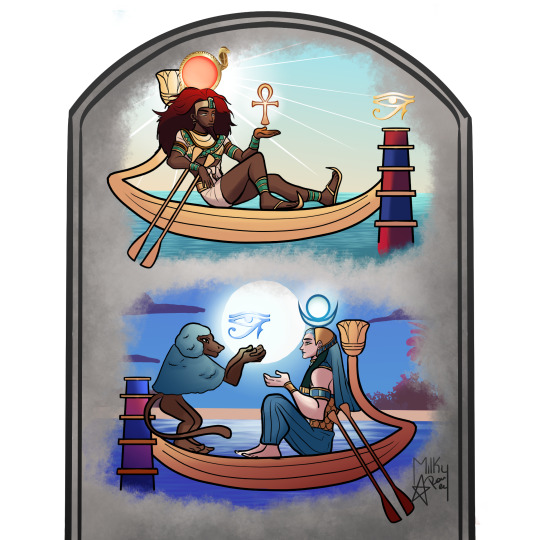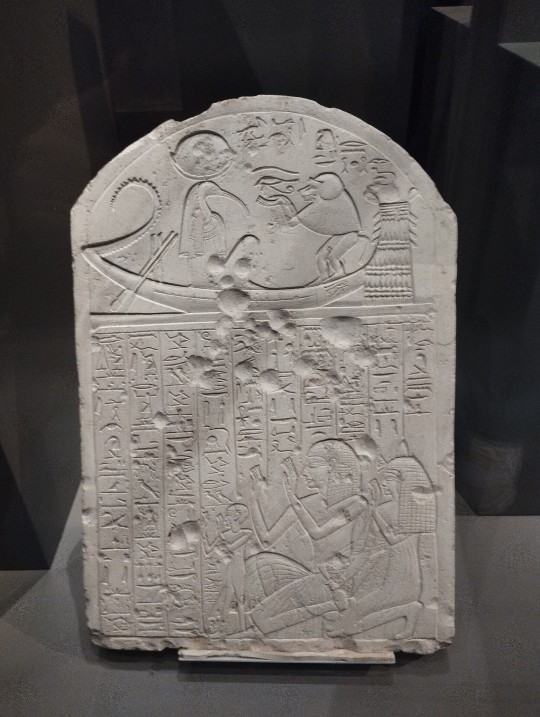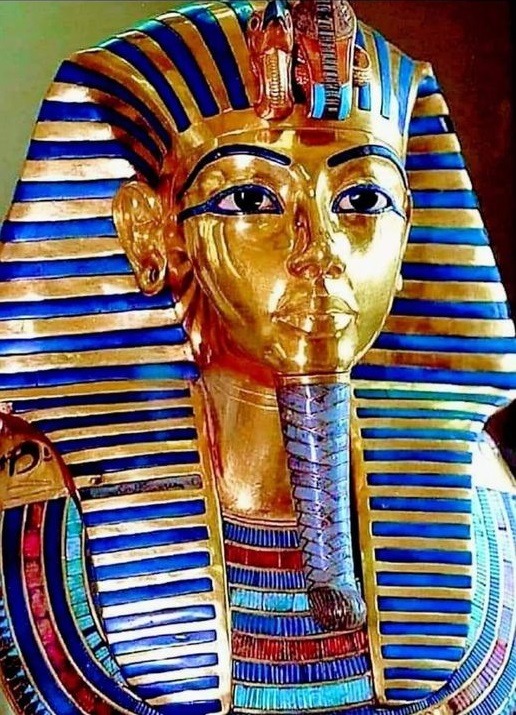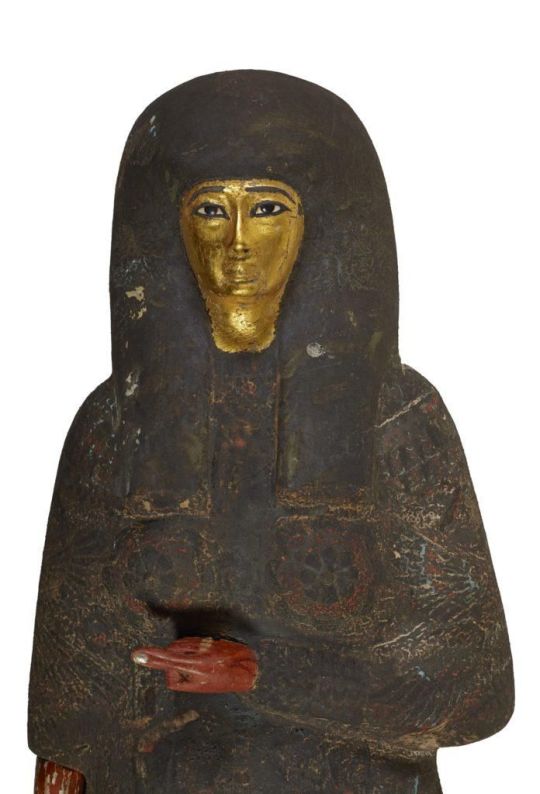#Egyptian museum
Explore tagged Tumblr posts
Text
Chariot Body of Thutmose IV

Deep in the Valley of the Kings, archaeologist Howard Carter uncovered something remarkable in 1903 — the nearly 3,400 year-old chariot body of Thutmose IV, the 8th pharaoh of the 18th Dynasty of Egypt.
Found in his tomb, KV 43, this chariot is one of the few Egyptian examples to survive into the modern day.
It was part of the king’s burial items, meant to serve him in the afterlife and offers a rare glimpse into the past.
Made from lightweight wood, the chariot was designed for speed and maneuverability, essential for both battle and ceremony.
It wasn’t just practical. It was also beautifully decorated, likely with gold leaf, leather, and intricate designs.
These details highlighted the king’s power and status, fitting for a ruler who was both a warrior and a god-like figure.
The discovery of Thutmose IV's chariot gives us a valuable look at the engineering and artistry of the 18th Dynasty.
Despite being buried for millennia, its preservation helps us understand the significance of chariots in ancient Egypt and showcases the skill of its craftsmen.
📍Egyptian Museum, Cairo
#Thutmose IV#Howard Carter#valley of the kings#KV 43#egyptian pharaoh#pharaoh#chariot#burial items#funeral#afterlife#ancient egypt#ancient civilizations#engineering#artistry#18th dynasty#Egyptian Museum#Cairo#archaeology#craftmanship
151 notes
·
View notes
Text

Ashayet | Egyptian Museum
45 notes
·
View notes
Text






فيها حاجة حلوة .. :)
#my own stuff#mine ❤️#my details#mobilephoto#moments#mine#photooftheday#mobilephotography#studyblr#vsco#museum#egypt stuff#egyptian#ancient egypt#egyptian museum
34 notes
·
View notes
Text

The Sun and Moon boats ☀️🌙🛶
Based on these two stelae I saw at Turin's Egyptian Museum:


(don't mind the quality, I took the pictures myself with my crappy phone lol)
100 notes
·
View notes
Text

The verso of the Narmer Palette. Narmer, considered by many Egyptologists to be the first ruler of a unified Egypt, stands over a defeated foe and is about to bring his mace down on the foe's head. Narmer is shown here wearing the white crown (hedyet) of Lower Egypt, while on the recto he is depicted with the red crown (desheret) of Upper Egypt, perhaps symbolizing his unification of the two realms. Artist unknown; sculpted ca. 3200-3000 BCE. Found at Hierakonpolis (Nekhen), pre-unification capital of Upper Egypt; now in the Egyptian Museum, Cairo. Photo credit: Heagy1/Wikimedia Commons.
#art#art history#ancient art#Egypt#Ancient Egypt#Egyptian art#Ancient Egyptian art#Narmer#Narmer Palette#Predynastic#First Dynasty#stonework#greywacke#carving#Hierakonpolis#Egyptian Museum#Egyptian Museum Cairo
409 notes
·
View notes
Text

Ceremonial Throne of Tutankhamun aka Tutankhamun’s Ecclesiastical Throne
New Kingdom, late 18th Dynasty, reign of Tutankhamun, ca. 1332-1323 BC. From the Tomb of Tutankhamun (KV62), Valley of the Kings, West Thebes. Now in the Egyptian Museum, Cairo.
#egypt-museum.com#reddit#artefactporn#new kingdom#sartew#tutankhamun#king tut#tutankhamun’s ecclesiastical throne#ceremonial throne of tutankhamun#late 18th dynasty#egyptology#kv62#tomb of tutankhamun#1332-1323 bc#valley of the kings#west thebes#egyptian museum#cairo#egypt
13 notes
·
View notes
Text
Fascinating article by Christina Riggs on the Egyptian Museum in Turin.
11 notes
·
View notes
Text

Egyptian tomb figurine
* Egyptian Museum of Turin
Turin, June 2023
90 notes
·
View notes
Text

the mask of Tutankhamun
#mask of Tutankhamun#Tutankhamun#tutankamon#tutankhamun#tutankhamun's mask#funerary mask#funerary mask of Tutankhamun#howard carter#1925#valley of the kings#cairo#egyptian museum
13 notes
·
View notes
Text










Oct 19 2024
Mooseem day 🤭❤️
(i will post more pics in a reblog and yap about the day! Wait!)
#Egyptian museum#Egyptian#Egypt#statues#History#Museum day#life#real life#Me#Mine#Pics#a day in the life#A day to remember#family
6 notes
·
View notes
Text

The youngster and the sphynx
Egyptian Museum
Cairo/ Egypt
photo cjmn
36 notes
·
View notes
Text
Canopic Chest of Tutankhamun (1342-1324 BC)

New Kingdom, late 18th Dynasty, from the Tomb of Tutankhamun (KV62), Valley of the Kings, West Thebes, Luxor, Egypt.
—
Canopic chests are cases used by ancient Egyptians to contain the internal organs removed during the process of mummification.
Once canopic jars began to be used in the late 4th Dynasty, the jars were placed within canopic chests.
Although the first proven canopic burials date from 4th Dynasty reign of Sneferu, there is evidence to suggest that there were canopic installations at Saqqara dating from 2nd Dynasty.
The first canopic chests were simple and wooden, but as time went on, they became more elaborate.
Then, around the 21st Dynasty (1069–945 BC), Egyptians decided to leave the viscera inside mummies.
But because they had been using canopic chests for thousands of years, they kept putting them in tombs, just without anything in them.
Canopic chests fell out of use during Ptolemaic Kingdom.
The style and materials were different at different times, though always reflected Egyptian ideal of perfectly measured and precise beauty.
This alabaster canopic chest of Tutankhamun is considered to be one of the finest masterpieces of King Tut’s collection.
The interior of the chest is divided into four compartments, each with a cylindrical hollow covered by a lid elegantly carved in the form of the king’s head.
At the four corners of the chest, carved in high relief, are four goddesses: Isis, Nephthys, Neith and Serket — who stretch out their arms to protect the contents of the chest.
Each of the four compartments of the canopic chest held a miniature coffin. Covered in linen, they stood upright in their cylindrical compartments.
Each was almost glued to the bottom owing to the hardening of the unguents that had been poured in as part of the ritual.
It was the duty of the goddess Nepthys, whose name is inscribed on the front, to protect the lungs of Tutankhamun, which were placed inside, after first being preserved.
The figure, fashioned of solid beaten gold, contains inlays of colored glass and semiprecious stones.
It is very close in design to the second coffin in which Tutankhamun was buried; in fact, it is almost a miniature version.
📍 Egyptian Museum, Cairo (JE 60687)
#canopic chests#mummification#internal organs#ancient egypt#canopic jars#Sneferu#Tutankhamun#King Tut#Isis#Nephthys#Neith#Serket#miniature coffin#Nepthys#Egyptian Museum#Cairo#Egypt#burial#ritual#afterlife#Tomb of Tutankhamun (KV62)#Valley of the Kings#West Thebes#Luxor
27 notes
·
View notes
Text

7.23
42 notes
·
View notes
Text

There is a full-length NUDE statue identified as Mark Antony in Egypt?? How did I not know this before? Why can't I find image of it anywhere on the internet?
#a noble ruin#mark antony#marc antony#marcus antonius#rome#egypt#cairo egyptian museum#cairo#egyptian museum#roman tag#ancient statue
13 notes
·
View notes
Text


When you come to Sharm El sheikh there is one excursion, which is a must. This is to go and see the wonderful city of Cairo. This is where you get the chance to see one of the last remaining wonders of the world, which of course are the Great pyramids and the Sphinx of Giza.
3 notes
·
View notes
Text

Mummy case with gilded face (cleaned in the 1970s) containing the mummified body of a young girl called Tjayasetimu. The mummy case has been covered in black goo. Egyptian, c. 900 BC. read more
Ancient Egyptian coffins and mystery of ‘black goo’ | British Museum
4 notes
·
View notes